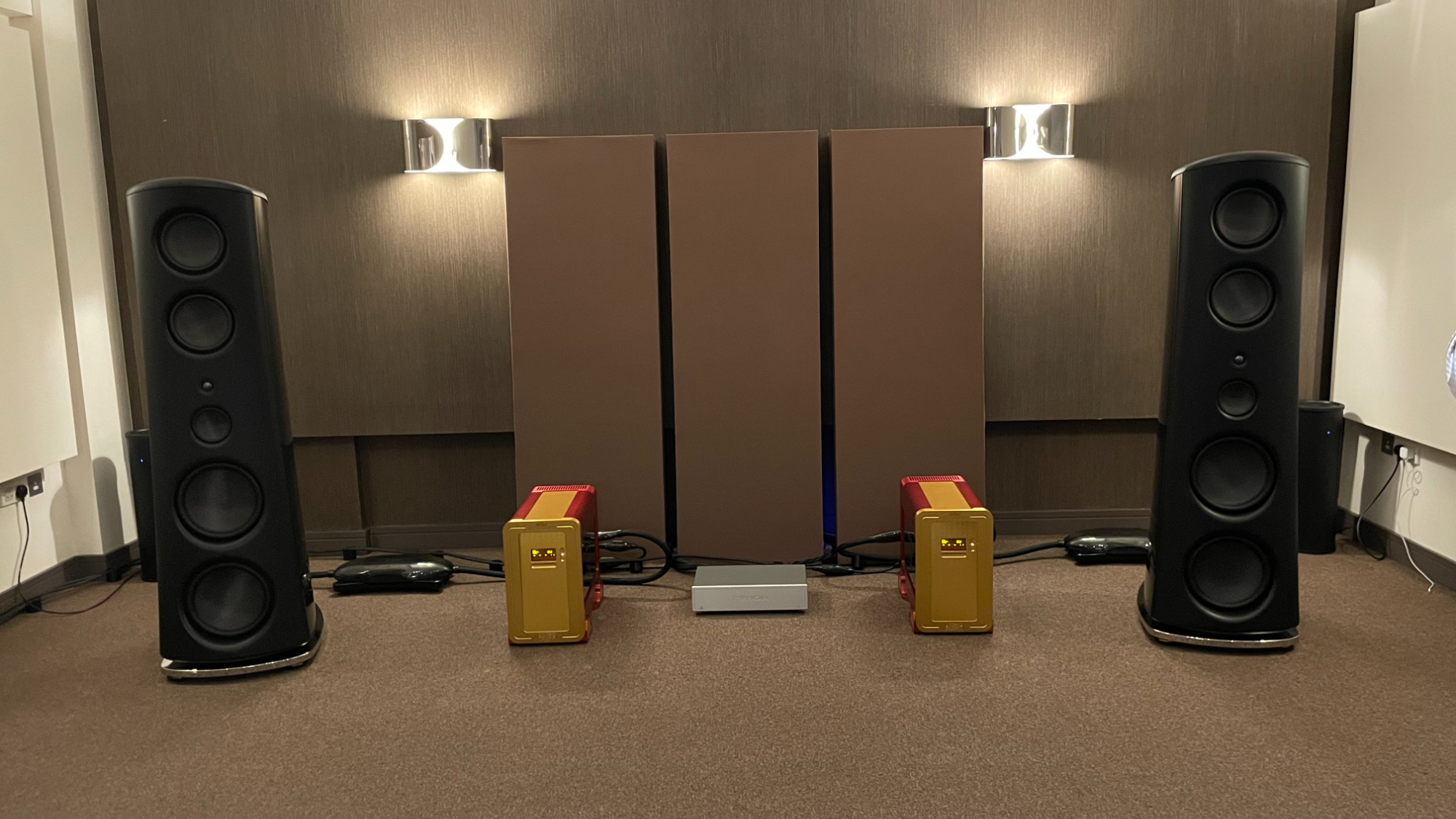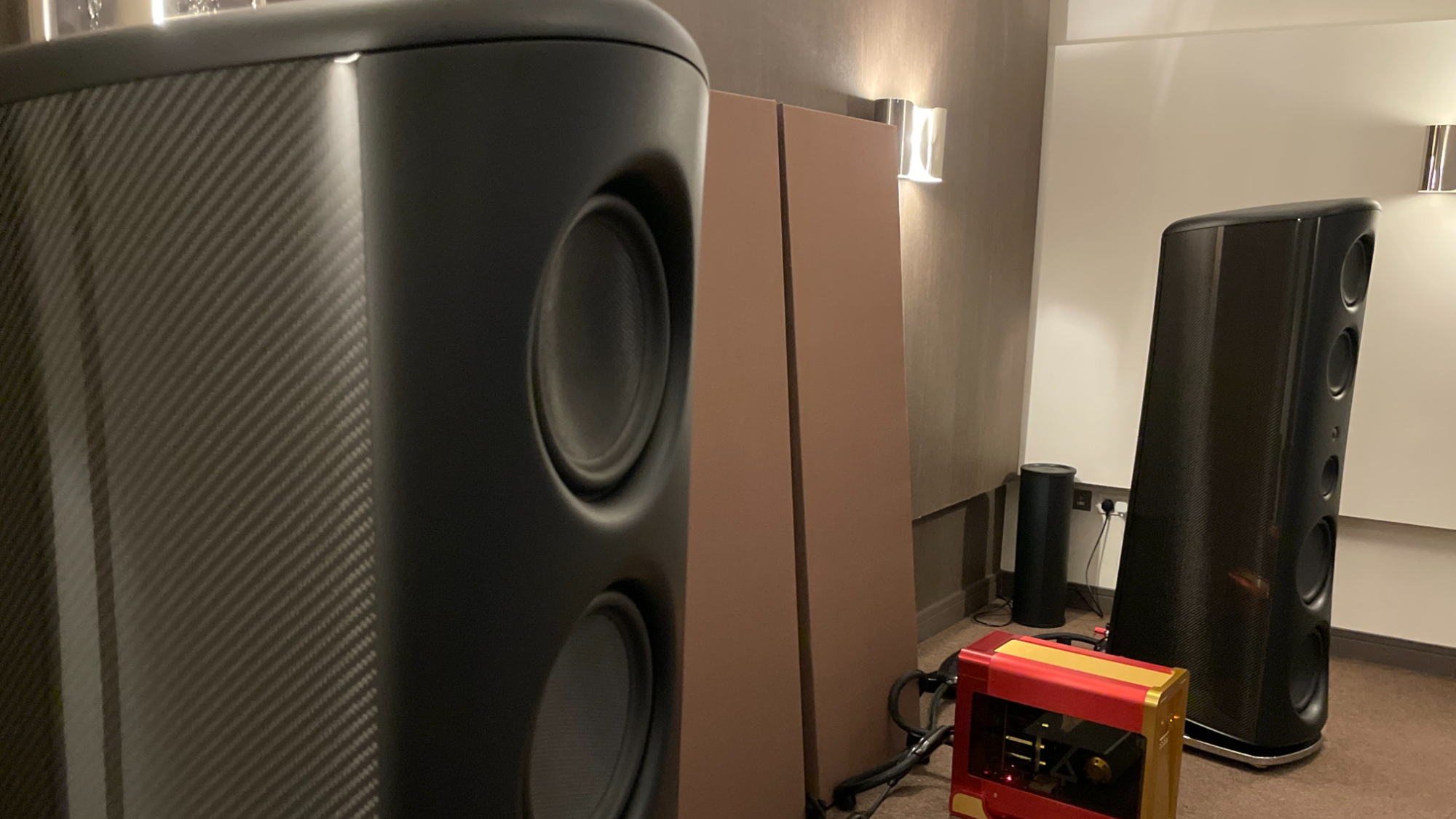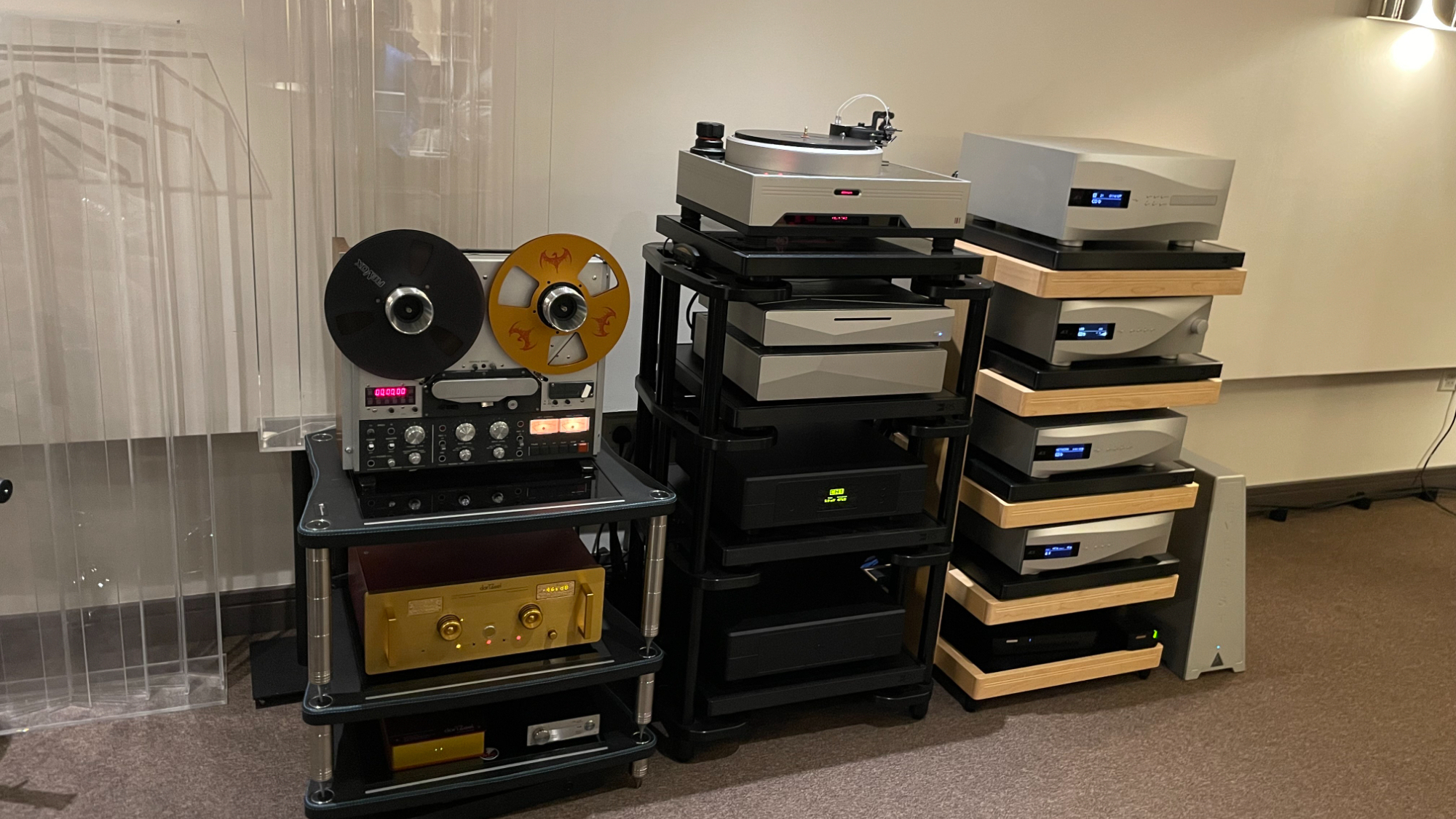I listened to Magico's new loudspeakers and only one thing was more mind-blowing than their price: their bass clarity
Incredibly clarity at a mind-blowing price

One of the perks of the job when you work for What Hi-Fi? (and I'm contractually obliged to state that there are many) is that you regularly get to experience such enormous quantities of audio products, be they great, terrible or somewhere in between. The list of headphones with which I've had ears-on listening time is growing by the day, and despite having been in the job only for around a year and a half, it's been a delight to hear and sometimes play with the sort of kit that most people wouldn't necessarily have regular access to.
This all being said, a lot of my time is spent with the sort of modestly priced kit – headphones, wireless earbuds, portable speakers – that's well within the range of the average consumer. Don't get me wrong, I love a good pair of headphones, be they cheap and cheerful Sony buds or the endlessly rewarding delights of a premium pair of Grados, but this is very much the tip of the hi-fi iceberg. If you want a hint of how deep that metaphorical icy colossus actually goes, the £450,000 / $375,000 Magico M7 floorstanders will give you an indication of how costly some of this stuff can become.
The worry, of course, is that you feel spoiled by the heaviest financial hitters, like spending a week test-driving a Lamborghini and then crying inside every time you're forced to pry open the door of your rusting 0.8 litre VW Polo. Happily, I'm an inveterate risk-taker, so when Magico invited the editorial team to experience its new megabucks floorstanders, I was ready to take a chance that my standards would forever be altered by such unfettered levels of audio luxury.
I've often slyly commented that some of the larger speakers that you come across on your travels as an audio journalist are a danger to some of our more vertically challenged team members, but even I felt intimidated by the 164cm towers. Each unit weighs nearly a quarter of a tonne and is constructed using a carbon fibre shell, with Magico boasting the same levels of engineering and design that you would normally find in a championship-winning F1 car.
The M7's drivers include a 28mm diamond-coated tweeter, a 12.7cm midrange (which has an aluminium honeycomb core sandwiched between two layers of graphene-infused carbon fibre), a 23cm mid/bass and a 30.5cm bass driver. These have been designed to all but eliminate any sonic distortion, with high-end materials incorporated for greater handling and class-leading dynamic capabilities, as you'd expect to find in speakers at this price level. Magico says that those midrange units are the highest-performing drivers of their size and class it has ever produced.

All of these facts and figures are nothing but numbers on a specification sheet until they are experienced first-hand, so it's nice to report that Magico's grandiose sonic claims were, on the whole, more than mere hyperbolic bluster.
The demonstration I heard took place in high-end retailer KJ West One's bespoke listening room in London which, while acoustically treated and furnished with high-end electronics and supports, was an unfamiliar room to me, accustomed as I am to What Hi-Fi?'s own dedicated listening rooms. While I couldn't make concrete judgments on the sound quality in any unfamiliar environment with unfamiliar partnering kit – especially at a media event – what follows are my initial impressions of what I heard during the demo.
The latest hi-fi, home cinema and tech news, reviews, buying advice and deals, direct to your inbox.
The Magico M7 speakers were powered by Dartzeel NHB-468 monoblocks (around £81,000 each), while the source components were an Innuos Statement music server (£21,000) feeding into a dCS Vivaldi Apex DAC (£38,500). All the music played during the demo were CD-specification files from this server.
Our demo started off with a recording of Prince's rather sparse, politically charged slice of esoterica Avalanche. Immediately the Magico speakers impressed me as they unveiled the sort of crispness and breathtaking spaciousness that lesser kit could only marvel at.
Sonically, I've never heard clarity like it, save for the unparalleled clarity and unspoiled immediacy you get from attending a live performance. The M7s' sonic character, perhaps their very reason for existing, is to eke out as much textural detail and precision as is possible at this level, bringing out those timbres housed within each instrument with incredible insight while allowing each note to sit within a spacious, utterly uncluttered soundscape. To my ears, the Magicos picked up every breath and whisper from Prince's personal, stripped-back delivery in this demo, separating the high-pitched lead vocal performance from those fuller, deeper piano strikes and creating a real sense of dimensionality as the falsetto vocals hovered above the anchoring instrumentation.
At the bottom end, it's hard to conceive that a pair of hulking floorstanding speakers could manage such precision and detail. The M7 towers treated us to a bass performance that, no matter the genre, had the deft agility of a graceful ballerina melded with the same precision and attention to detail normally exhibited by a world-class surgeon at the top of their game.
Those organisational skills were certainly something to behold, even in a demo environment. Complex classical arrangements, such as Bernstein's interpretation of Mahler's Symphony Number 2, never once felt cluttered or in danger of allowing certain instruments to become lost within a larger amorphous morass. Instead, the entire orchestra seemed as though it had been neatly separated into its consistent parts as the M7 picked out each instrumental segment and allowed it to shine to the fullest, never overemphasising a single percussive strike or string-section swell, while always maintaining the integrity of the larger sonic picture.
For impressing with precision, analysis and organisation, then, the Magico speakers have done their job. But how did the M7 do when it came time to activate your goosebumps or get your pulse beating like an ace fighter pilot? Well, it feels odd to criticise a pair of speakers that cost as much as a house (albeit not a very big one considering the current market), but that constant pursuit of purist detail might not see the M7 find favour with those of us who desire punchy, full-bodied dynamism. There's no getting away from how clean, well-organised and texturally competent the Magico floorstanders sounded to me in this demo; yet, for grabbing your attention, they may just play it a little too... clean?

A recording of Bizet's Toreador's Song from Carmen undoubtedly gave the primary vocal performance plenty of refinement and space, but did it infuse it with the soul and passion that befits one of the most iconically rousing operatic compositions of all time? Those iconic stabs of life that arrive as the orchestral accompaniment combined with the male chorus were sharp, well-managed and in perfect order, but could they have swelled a little more in contrast with the single vocals of the central performance? Could they have punched through with the sort of depth and weight that knocked you off your stool, especially given the size of the towers and the prices being paid? Perhaps.
Complaints such as these are of course deeply relative, and my reviewer's ears have been trained to listen critically at any product's performance, no matter how much I may be enjoying its sonic talents. And let's not for a moment suggest that the experience of listening to any pair of multi-thousand-pound speakers is ever going to be anything close to underwhelming (if it did, there's something else going wrong here). It did feel as though the Magicos had a sonic preference that prioritises certain aspects of the music played that were designed to impress forensic detail-hunters rather than adrenaline-loving thrill-seekers. At What Hi-Fi?, we have always placed great stock in any product's capacity to emote with full transparency, but I can utterly understand the appeal of the M7s' spacious, deeply analytical style.
Whatever the case, my abiding memories of the Magico speakers will remain overwhelmingly positive. It isn't every day you're treated to ultra high-end hardware, be it in the form of speakers, supercars or Fabergé eggs borne aloft upon satin cushions and sprinkled with exquisite flakes of gold and saffron. As a technical exercise and a showcase for what ample resources and engineering can do when combined effectively, the Magico M7 speakers and their accompanying equipment put on quite the show – even if they ended up as the sort of speakers that I felt more impressed by than those that made me fall head over heels in love.
MORE:
Magico's floorstanders boast F1 levels of engineering – but the price will make your eyes water
Read our Magico A1 review
These are our best floorstanding speakers: budget to premium
The trouble with my listening room: speakers weren't made for it

Harry McKerrell is a senior staff writer at What Hi-Fi?. During his time at the publication, he has written countless news stories alongside features, advice and reviews of products ranging from floorstanding speakers and music streamers to over-ear headphones, wireless earbuds and portable DACs. He has covered launches from hi-fi and consumer tech brands, and major industry events including IFA, High End Munich and, of course, the Bristol Hi-Fi Show. When not at work he can be found playing hockey, practising the piano or trying to pet strangers' dogs.
